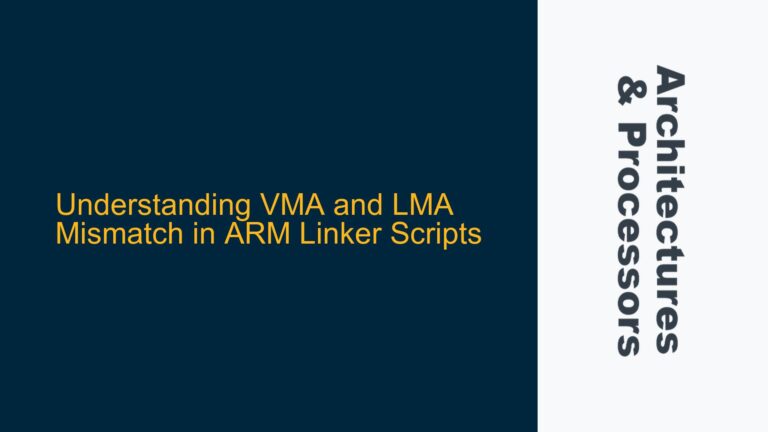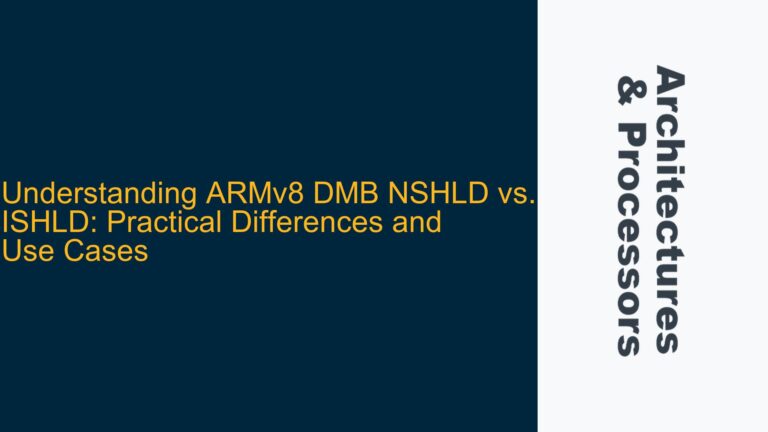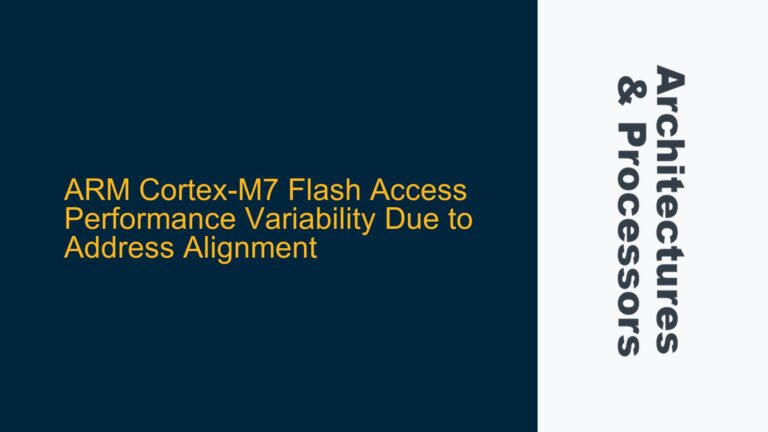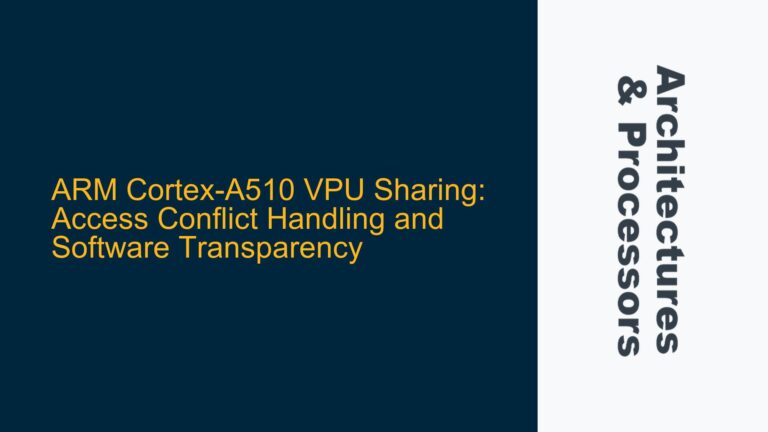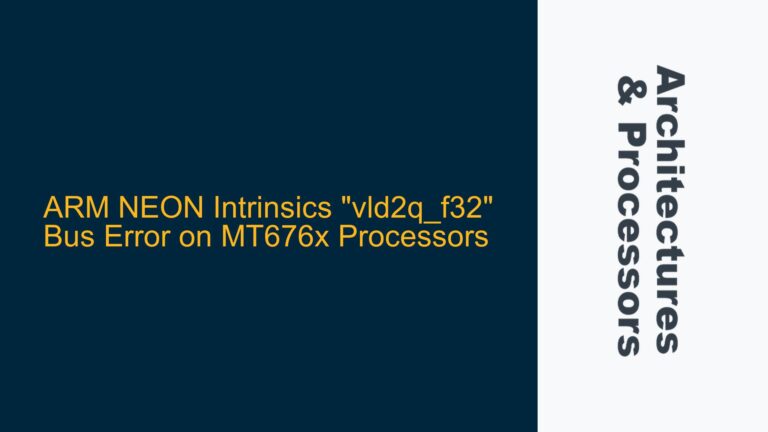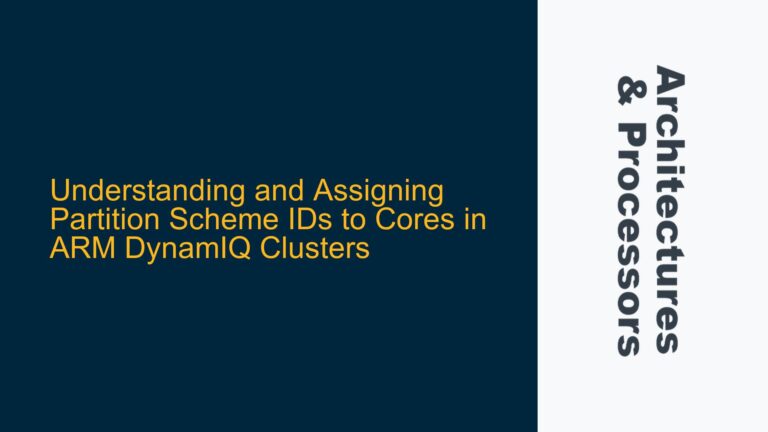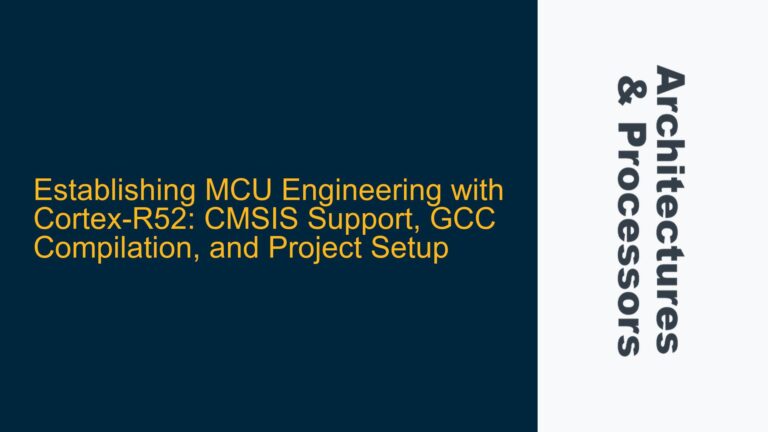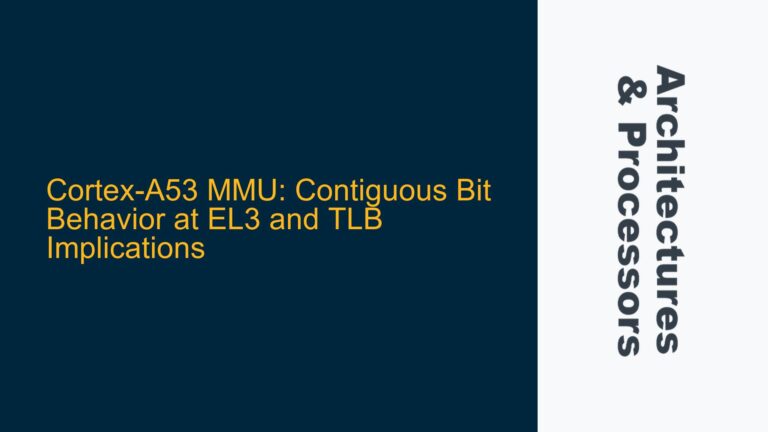VMA and LMA Mismatch in ARM Linker Scripts
ARM Cortex-M Reset Function Address Mismatch: VMA vs. LMA The issue at hand revolves around the discrepancy between the Virtual Memory Address (VMA) and the Load Memory Address (LMA) of the Reset function in an ARM Cortex-M microcontroller. Specifically, the Reset function is placed in the .text section of the ROM, with an LMA of…
